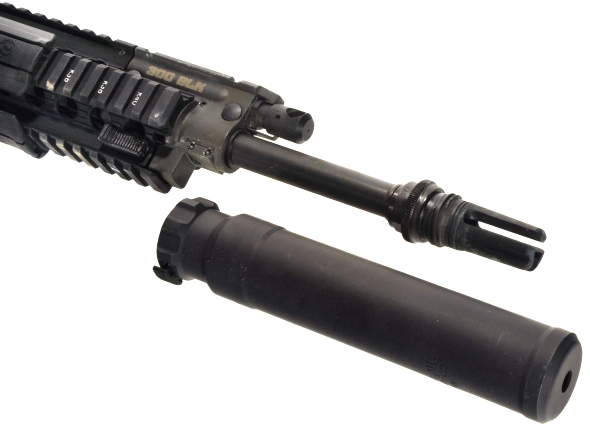
My initial intention was to run both the SR5 and SR7 silencer results together, but the dynamics are quite different so it seemed appropriate to split them up. The 300 Blackout barrel with Advanced Armament 90T 1/2×28 Blackout® Flash Hider Mount was installed on the Ruger SR556TD. Without the silencer installed, the mount makes an effective flash hider all the way down to 10.2″ length barrels. With the silencer in place the flash hider mount accommodates the SR7’s Fast Attach feature. No tools are required to install or remove the silencer and it locks firmly in place.

A Burris AR-536 5x magnification prism sight was installed for accuracy testing. Not a red dot sight, the AR-556 is closer to a traditional telescopic sight. The primary mechanical difference is that the task of correcting image inversion is accomplished by a prism rather than an erector tube and lens system. The reticle is exceptional and illuminates, red and green. Without power, the same reticle appears in black.
Advanced Armament’s SR7
The Advanced Armament is optimized for use with the 7.62 NATO, however, it works well with any similar case capacity cartridge or smaller. The SR7 is a multi caliber silencer that also works well with cartridges such as the 300 AAC Blackout, 6.8 SPC and 5.56 NATO.
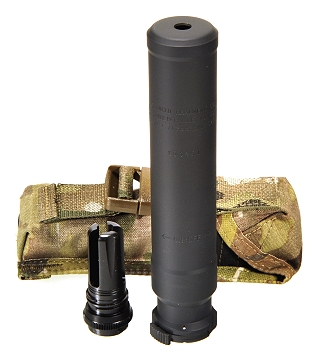
|
Model |
SR7 |
| Calibers | Multi |
| Weight | 19.6 Oz. |
| Length Full/Compact | 7.60“ |
| Tube Diameter | 1.50″ |
| Tube Material | Blackened 316L SS |
| Baffle Core | Iconel 718 |
| Assembly | Welded |
| Attachment | 90T Fast-Attach |
| Sound Reduction | 25dB to 39 dB |
| MSRP | $1,095.99 |
The Advanced Armament SR7 is supplied as a small kit with 90T 1/2×28 Blackout® Flash Hider Mount, stow pouch, manuals and installation/removal instructions. Installation on the Ruger took less than 10 minutes and made no permanent changes to the firearm. AAC includes Rocksett with the product as a thread locker to make sure the flash hider stays put at even temperature extremes, up to 2,000ºF, however, I just removed the Ruger SR 556’s flash suppressor and torqued the AAC flash hider against the Ruger’s crush washer. That was enough to keep everything tight throughout live fire.
The checkout set up
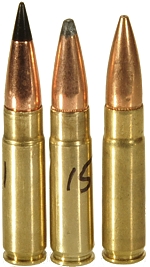
Three types of ammo were utilized; one factory load and two handloads. Left to right: Barnes TAC-TX 110 grain handload, Hornady Interlock 190 grain handload and Remington 220 grain subsonic factory load.
A little different tact was taken based on accumulated experience and prior results. H110 and W296 powders were dropped, replaced by Lil’ Gun. Pressure and velocity were more uniform and I didn’t have to worry about low density H110 loads. I like H110, particularly in near compressed loads and in concert with the 45 Colt.
Alliant AR-Comp was tried, then set aside for denser loads with Hodgdon CFE 223 and light bullet subsonic loads. Alliant 300MP and 2400 were also test loaded, but not to the extent it would be appropriate to post results. We’ll get back to this.
Both Hornady and Jamison once fired brass were eliminated due to soft brass and enlarged primer pockets, subsequently, R-P brass was used throughout. Not sure what the issue is here. I thought it might be excess pressure, but the Remington brass was fired right along side of them and experienced no primer pocket problems.
VLD type bullets for the heavier weight range subsonic and supersonic loads were set aside. Accurate VLD loads required a narrow selection of other components and there was not a quantifiable benefit. Hornady 190 grain bullets were selected because of the boat tail / short ogive form. They shot well, did so consistently and were actually more quiet than other bullets at very similar velocities. No, I don’t know why, I am not a sound engineer, but I know that it is so.
More time was given to the Barnes TAC-TX 110 grain bullet. The last time they were incorporated in a project was in concert with a Mini 14 300 Blackout and I wanted to see how they would perform with a more accurate firearm. The Barnes bullet has a flat base and a very short shank and it has a cannelure. All ammo received a Lee Precision factory crimp.
Handload Data
 |
Warning: Bullet selections are specific, and loads are not valid with substitutions of different bullets of the same weight. Variations in bullet material and length will alter net case capacity, pressure and velocity results. Primer selection is specific and primer types are not interchangeable. These data represents maximum loads in our firearms and test equipment and may easily be excessive in other applications. All loads should be reduced by 3%, and developed following safe handloading practices as represented in established reloading manuals produced by component manufacturers. Presentation of these loads does not constitute a solicitation for their use, nor a recommendation.
|
||||||||||||||||||||||||||||||||||||||||||||||||||||||||||||||||||||||||||||||||
|
|||||||||||||||||||||||||||||||||||||||||||||||||||||||||||||||||||||||||||||||||
Accuracy was good, suppressed or unsuppressed, although suppressed was approximately 1/4″ better on the average. All were shot at 100 yards. #1 5/8″, #3 3/8″, #4 3/4″, #2 3/4″. Factory ammo groups just over 1″. The Ruger adjustable gas system was able to shoot and cycle all loads reliably by switching between the #1 and #2 settings.
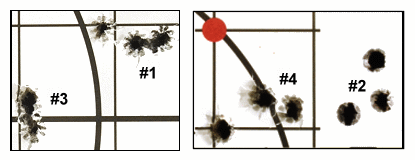
Conclusions
Coming off of a suppressed 45 Auto pistol silencer project, the SR7 and 300 Blackout combination was impressive. The rifle did run a little dirty compared to an unsuppressed configuration, mostly showing on recovered empty casings, although this never interfered with operational reliability.
While the silencer did add some overall length of the rifle, the silencer is light and the tube diameter is relatively small. The Fast-Attach mount is nifty. Changing back and forth, silencer on/off was a snap. The silencer stayed put and it never got very warm.
The SR7 really suppresses to the extent that the mechanical sound of the rifle cycling in subsonic loads was greater than report. Supersonic ammo suppression was the big surprise for me with the loudest perceived somewhere between a gas piston driven air rifle and a 22 rimfire rifle. The 300 Blackout is not a cartridge that generates much in the way of recoil, but with suppressor even this was reduced. We’ll take a look at the SR5 5.56 NATO version and get back with a summary of both. Fun.
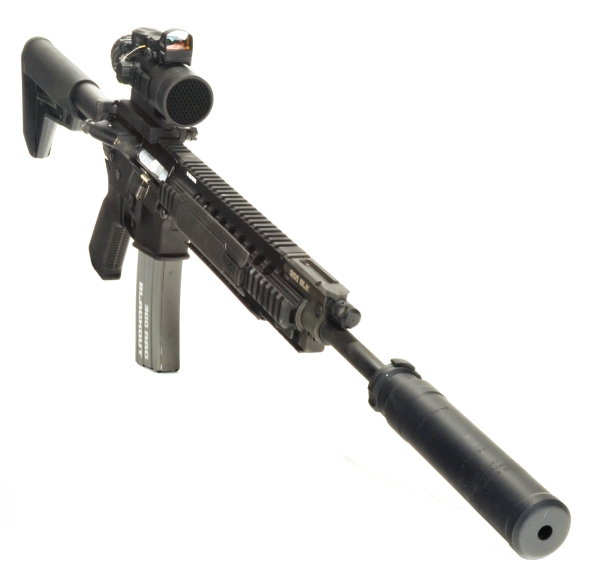
Silenced Modern Sporting Rifles Part 1
Silenced Modern Sporting Rifles Part 2
Silenced Modern Sporting Rifles Part 3

Email Notification